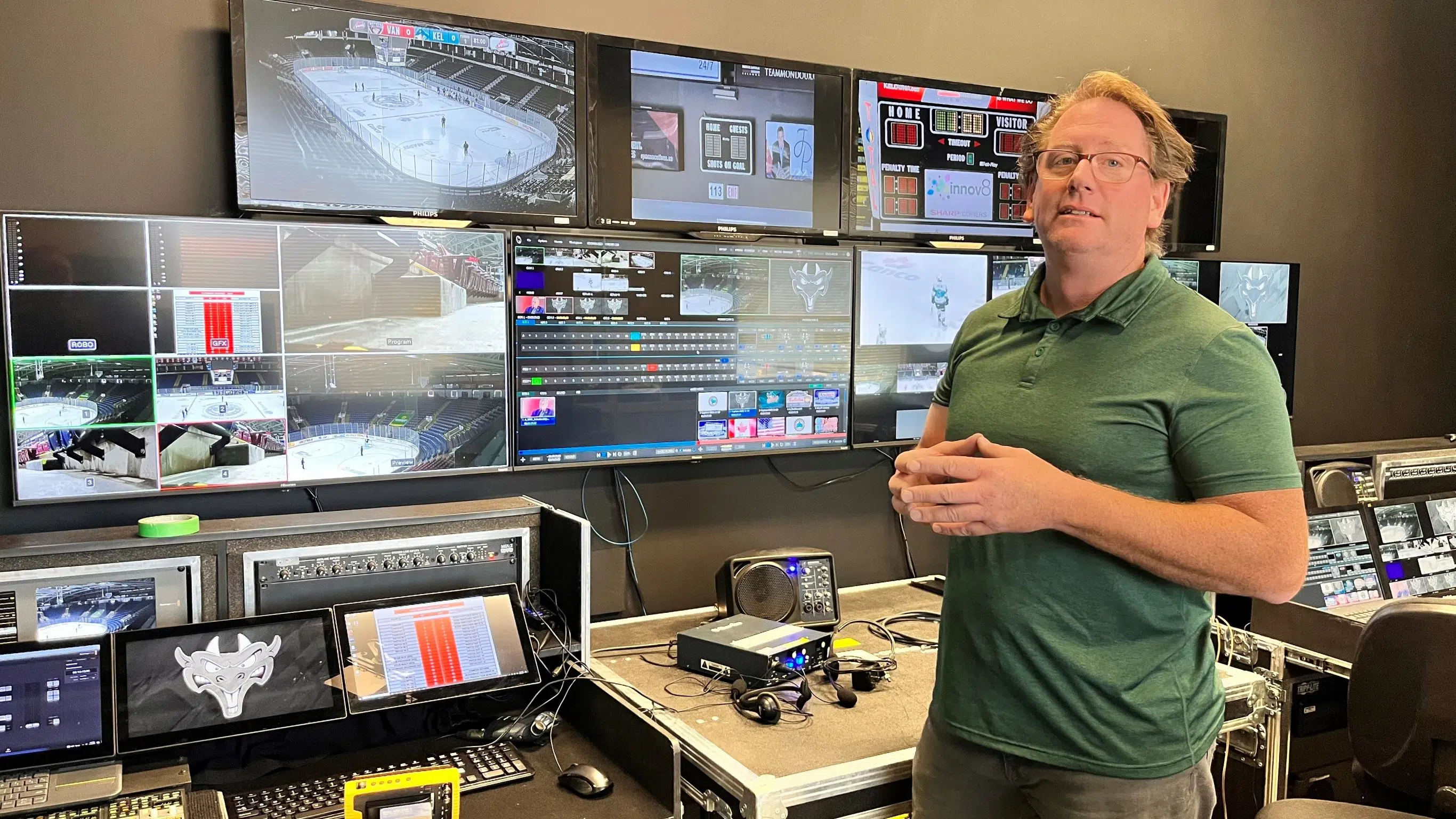
Kelowna Rockets game day presentation doesn’t go unnoticed
If you’ve ever attended a Kelowna Rockets home game, you will notice the Jumbotron at centre ice.
You can’t miss it, with four LED screens measuring 6.5 feet high by 12 feet wide perched above the score clock providing game action, replays, and team messaging during a game.
Much of what is seen to improve the in-game experience for the fans pales in comparison to the working bees behind the scenes that make the electronic display come to life.
“There are about 12 of us on the crew,” Greg Truman, the Broadcast Services Manager for the Kelowna Rockets told RocketFAN. “We have eight cameras, so that takes four operators, a lighting person, a replay operator, and even someone on graphics.”


Comments